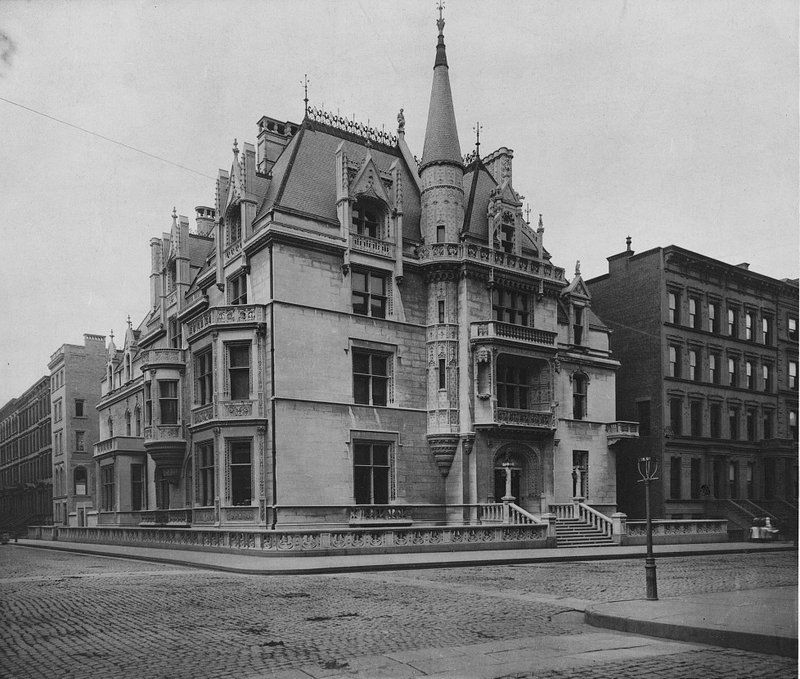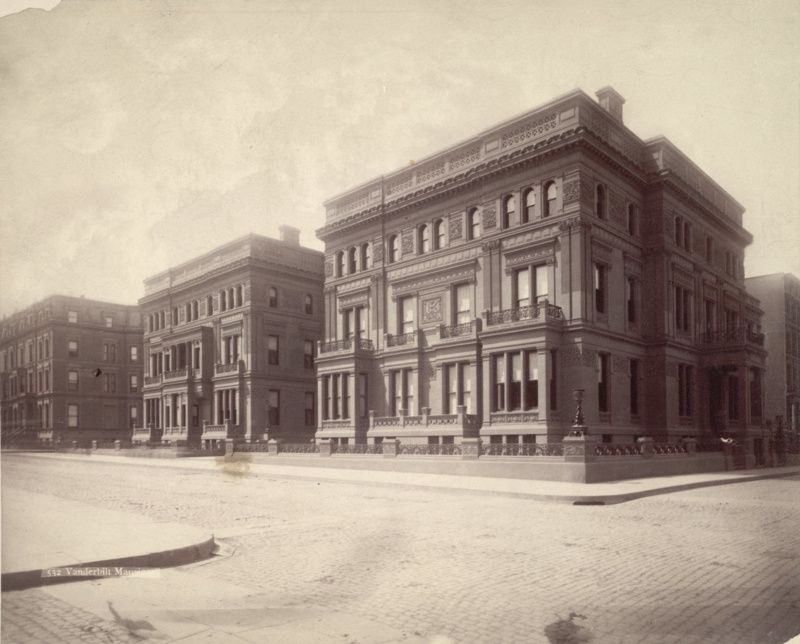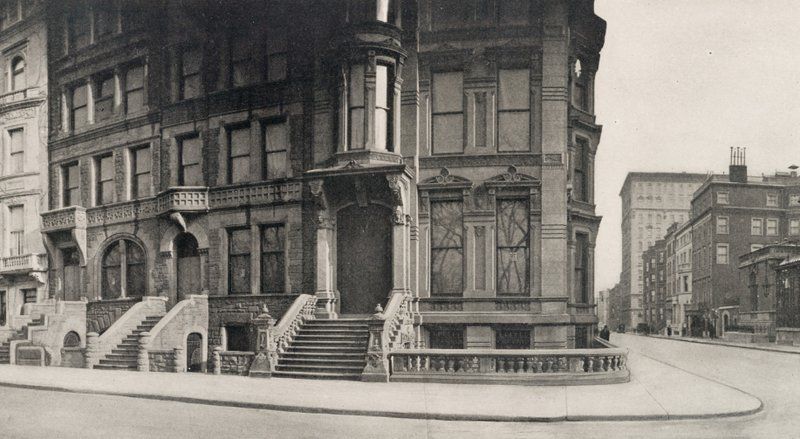Last Chance to Catch NYC's Holiday Notalgia Train
We met the voices of the NYC subway on our nostalgia ride this weekend!


Fifth Avenue had a major glow-up in the Gilded Age when it transformed from a pathway called Middle Road to a coveted address nicknamed Millionaire’s Row. A long stretch of the famous thoroughfare, from 59th Street to 78th Street, was known as the place where the wealthiest and most elite of New York City’s society lived. It was home to Vanderbilts, Astors, Beekmans, and more of the city’s “who’s who.” Gilded Age. While there are many gorgeous buildings that still exist from this time, there are others that have sadly been lost. Here, we revisit the lost mansions of 5th Avenue:

Every Wednesday - Sunday: Admire the extant facades of Millionaire's Row and hear about the scandalous goings-on inside!

This Fifth Avenue home of William K and Alva Vanderbilt wasn’t just a home, it was a tool Alva used to break in to New York City society. Designed by Richard Morris Hunt, this opulent mansion is where Alva hosted her infamous “Fancy Dress Ball” with 1,200 guests. The mansion was built of stone quarried from Caen, France and it was decorated with furniture and antiques from grand homes in Europe. Ironically called Petit Chateau by the Vanderbilts, the mansion was demolished in 1926 after being sold to a real estate developer. 666 Fifth Avenue, an office tower, now stands in its place.

“Copper King” William A. Clark sunk $6 million (roughly $150 million today) into his mansion at 960 Fifth Avenue according to the Museum of the City of New York. Dubbed “Clark’s Folly,” the mansion took fourteen years to build and when it was finished, consisted of “121 rooms, 31 baths, four art galleries, a swimming pool, concealed garage, and underground rail line to bring in heating coal.” Clark spent only as much time as it took to construct the mansion living it before he passed away in 1925. The home sold in 1927 for less than $3 million dollars and was promptly demolished, making it one of the most short-lived buildings in New York City. A 12-story luxury condo building designed by Rosario Candela stands in its place.

These “Triple Palaces” were built by William Henry Vanderbilt bought an entire block between 51st and 52nd Street where he built the three near-identical brownstone homes for himself and his wife along with their two daughters, Emily and Margaret. The adjoining drawing rooms could be converted into one large ballroom when needed. Though William H. Vanderbilt’s will barred the home from being sold outside of the family, a loophole was found and the property ended up in the hands of the Astors. The Astors unloaded the estate in the 1940s and today it is occupied by skyscrapers and retail.

William Henry Vanderbilt’s other two daughters – Florence Adele Vanderbilt Twombly and Eliza Osgood Vanderbilt Webb – weren’t too far away from their sisters. In fact, they were neighbors. Florence and Eliza’s Fifth Avenue townhouses were designed by architect John B. Snook and though close in proximity to the “Triple Palaces,” they looked very different. As opposed to the boxy shape of the Triple Palaces, the Snook-designed homes had varied rooflines with multiple domes and gables and the facades boasted bay windows and a spattering of turrets. Florence moved out of her home in 1926 and Eliza sold hers to John D. Rockefeller in 1913. A skyscraper stands in their place today.

Cornelius Vanderbilt II’s mansion was allegedly the largest single-family house in New York City at the time. The son of the Commodore built this massive abode on the site of three demolished brownstones at the corner of 57th Street and 5th Avenue. It was designed by George B. Post and expanded by Richard Morris Hunt in the 1890s. As the development of Fith Avenue increased in the 1920s, the home became surrounded by commercial buildings, like the Plaza Hotel. The mansion was sold in 1926 and demolished to make way for the Bergdorf Goodman department store. Remnants of the mansion, including the front gates that are now in Central Park, sculptural reliefs now in the Sherry-Netherland Hotel, and a grand fireplace now in the Metropolitan Museum of Art, can be found throughout Manhattan!

Jabez A. Bostwick made his fortune with Standard Oil and used it to build a 10-room French Second Empire mansion in 1876 on the corner of 61st Street. After Jabez’s death, his wife Helen lived in the home until she too passed away in 1920. Family friend Mrs. Marcellus Hartley Dodge, a daughter of William Rockefeller purchased the Helen Bostwick home in 1922 and left it seemingly abandoned until 1977. In 1979, the Gilded Age mansion was demolished to make way for a 33-story luxury apartment building.

Caroline Astor moved to this spot on Fifth Avenue after her nephew, William Astor, built the original Waldorf Hotel next door to her home. She traveled up to 65th Street and Fifth Avenue and hired Richard Morris Hunt to build a mansion for her and her son John Jacob Astor. The two residences were connected by a ballroom that could hold 1,200 guests (the same amount of guests that Alva Vanderbilt had invited to her fancy dress ball). John Jacob Astor renovated his mother’s side of the mansion after she died, but he himself wouldn’t live long enough to enjoy it. Astor was one of the many casualties of the doomed RMS Titanic. As per Astor’s will, his new wife was forced to give up the mansion, which went to Astor’s son from his first marriage, William Vincent Astor. Preferring his estate out on Long Island, William sold the 65th Street property to developers and auctioned off the interiors. Today the Temple Emanu-El stands in its place.

Clothing manufacturer Isaac Vail Brokaw’s home on the north side of 79th Street was inspired by the 16th century Château de Chenonceau in France’s Loire Valley. Designed by Rose and Stone in 1887-1890, the mansion stayed in the family until it was purchased by The Institute of Radio Engineers (IRE) in 1946. The mansion was demolished by its next owner, Campagna Construction Corporation, in 1965, despite being designated a landmark in 1962. Outrage over the home’s destruction helped to strengthen New York City’s landmark laws.
Learn more about the lost mansions of Fifth Avenue, and see those that still exist on our upcoming walking tour!
Next, read about the lost mansions of the Hudson Valley, Queens, Brooklyn, Staten Island, and the Bronx!
Subscribe to our newsletter